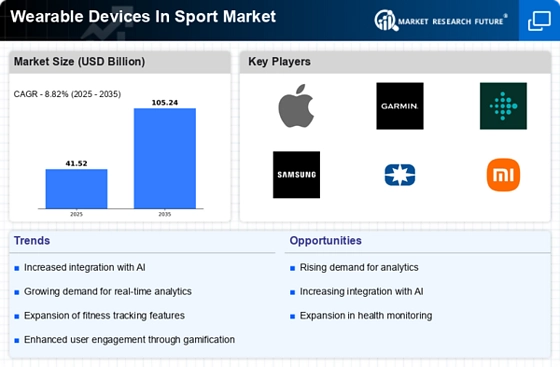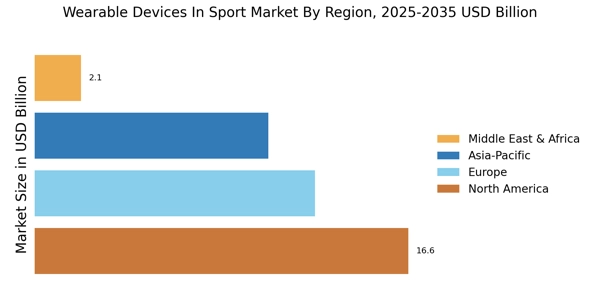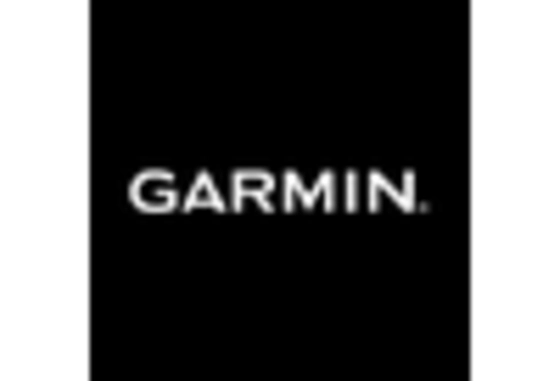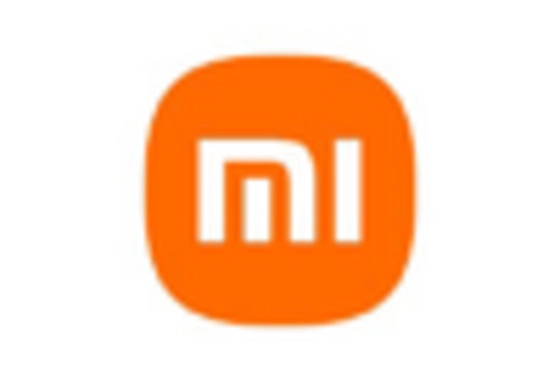Focus on Health and Wellness
The increasing emphasis on health and wellness is a driving force in the Wearable Devices In Sport Market. Consumers are becoming more health-conscious, seeking tools that can help them monitor their physical activity, heart rate, and overall fitness levels. Wearable devices that track these metrics are gaining popularity, as they empower users to take control of their health. According to recent data, the demand for fitness trackers has surged, with a significant percentage of users reporting improved health outcomes. This trend is likely to continue, as more individuals recognize the benefits of integrating wearable technology into their fitness routines. Consequently, the Wearable Devices In Sport Market is poised for sustained growth as it aligns with the global health movement.
Integration of Advanced Technologies
The Wearable Devices In Sport Market is experiencing a notable shift due to the integration of advanced technologies such as artificial intelligence, machine learning, and the Internet of Things. These technologies enhance the functionality of wearable devices, allowing for real-time data analysis and personalized feedback for athletes. For instance, devices equipped with AI can analyze performance metrics and suggest improvements, thereby optimizing training regimens. The market for wearable devices is projected to reach approximately 60 billion dollars by 2026, indicating a robust growth trajectory. This technological advancement not only appeals to professional athletes but also to fitness enthusiasts, broadening the consumer base for the Wearable Devices In Sport Market.
Rising Popularity of Sports Analytics
The Wearable Devices In Sport Market is significantly influenced by the rising popularity of sports analytics. Teams and athletes are increasingly utilizing data-driven insights to enhance performance and strategize effectively. Wearable devices that collect performance data, such as speed, agility, and endurance, are becoming essential tools for coaches and athletes alike. This trend is reflected in the growing investment in sports analytics, which is expected to reach over 4 billion dollars by 2025. As more athletes adopt these technologies, the demand for sophisticated wearable devices will likely increase, further propelling the Wearable Devices In Sport Market. This analytical approach not only improves individual performance but also contributes to the overall advancement of sports.
Increased Participation in Sports and Fitness Activities
The Wearable Devices In Sport Market is benefiting from the increased participation in sports and fitness activities across various demographics. As more individuals engage in physical activities, the demand for wearable devices that monitor performance and health metrics is on the rise. This trend is particularly evident among younger populations, who are more inclined to adopt technology in their fitness routines. Recent statistics indicate that participation in organized sports has grown, leading to a corresponding increase in the sales of wearable devices. This surge in interest presents a lucrative opportunity for manufacturers and developers within the Wearable Devices In Sport Market, as they seek to cater to a diverse and expanding consumer base.
Growing Influence of Social Media and Fitness Communities
The Wearable Devices In Sport Market is increasingly shaped by the growing influence of social media and fitness communities. Platforms that promote fitness challenges and share personal achievements encourage users to adopt wearable technology as a means of tracking their progress. This social aspect not only motivates individuals to stay active but also fosters a sense of community among users. As a result, wearable devices that offer social sharing features are becoming more appealing. Market data suggests that devices with integrated social functionalities are witnessing higher sales, as they resonate with the desires of consumers to connect and compete. This trend indicates that the Wearable Devices In Sport Market will continue to evolve, driven by the interplay between technology and social engagement.


















Leave a Comment